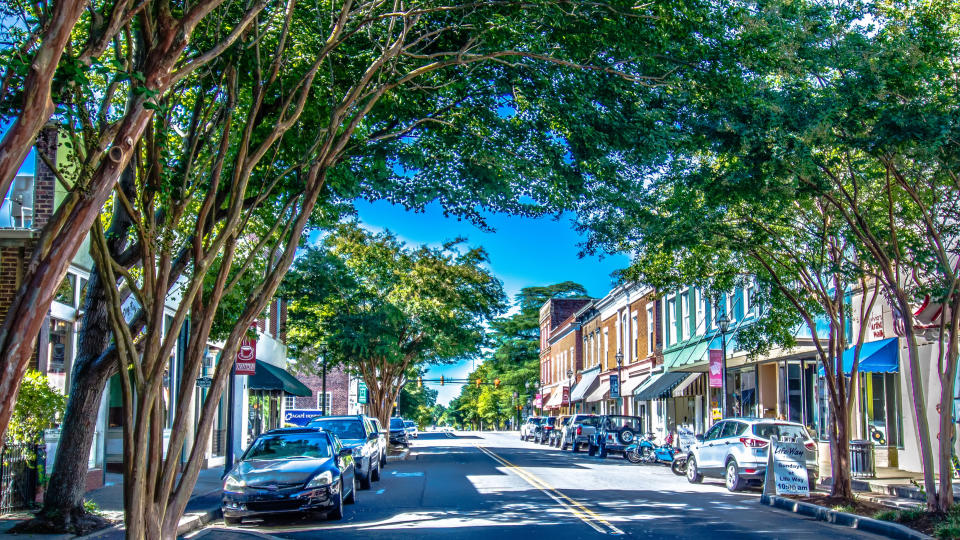Why the Definition of ‘Rich’ Has Changed the Most in These 5 States

From 2017 to 2022, the definition of wealth changed dramatically in multiple states nationwide. In some cases, the five-year change in the average income of the top 5% exceeded 40%. At GOBankingRates, we recently reviewed the American Community Surveys from this time period to determine how much the definition of rich has changed in every state.
Find Out: What Is the Median Household Income for the Upper Middle Class in 2024?
Learn More: 4 Genius Things All Wealthy People Do With Their Money
According to our research, Washington, Nevada, Idaho, South Carolina and California saw the most significant five-year changes in the average incomes of their top earners. We asked financial expert Russell Rosario to weigh in on what may be behind the increase. Rosario is a fractional chief financial officer (CFO), certified public accountant (CPA) and software engineer at Profit Leap. Here is why he said the definition of “rich” has changed the most in these five states.
Wealthy people know the best money secrets. Learn how to copy them.
The Tech Industry Boom in the West
“The definition of ‘rich’ has evolved significantly in states like WA, NV, ID, SC, and CA due to a combination of economic factors and demographic shifts,” Rosario said. “I’ve seen how shifts in industry and job markets drive these changes.
“For instance, in Washington and California, the tech industry boom has substantially increased average incomes. This influx of high-paying tech jobs redefines what it means to be ‘rich’ in these areas,” he said. “The cost of living has skyrocketed in cities like Seattle and San Francisco, making higher income thresholds necessary to maintain the same standard of living.”
The average income of the top 5% in Washington in 2017 was $378,374, by 2022 the amount had jumped to $544,518. This represents a jaw-dropping 44% change in the average income of the top earners over the course of five years. California fares only slightly better, with a 37% change over the same time period. To be considered rich in California, you would need to earn a shocking $613,602 in 2022, compared to $447,207 just a few years earlier.
Check Out: I’m a Financial Advisor: Here’s Why My Rich Clients Identify With the Middle Class
Eastern Migration
Some of the states have benefited from the high cost of living in the West. People and companies, seeking a more cost-effective region and lower tax burden, have flocked to states on the East Coast and in the Southwest.
“In Nevada and South Carolina, we see a different trend driven by migration and investment,” Rosario said. “These states have attracted new residents from higher-cost areas like California, bringing wealth and driving up property values.
“With my background in financial advising, I’ve observed that middle-class families moving from pricier states often experience a significant lifestyle upgrade, which elevates the overall wealth metrics in their new locales,” he said. “Additionally, these states offer business-friendly environments and lower tax burdens, making them attractive for entrepreneurs and retirees who bring considerable financial resources.”
Nevada and South Carolina both saw extraordinary changes in what is considered rich from 2017 to 2022. The average income of the top 5% in Nevada increased by 40% over the five-year period, while in South Carolina, it leaped by 38%.
Influx of Professionals
Another driving force for the change in the average income of the top 5% in these states is the movement of professionals. Again, many people seeking a lower cost of living relocate to other states, bringing their high incomes with them.
“Idaho’s situation is particularly interesting, given its transformation through tech and agriculture industries,” Rosario said. “There’s been a notable influx of tech professionals from neighboring states for a lower cost of living, mixing with a robust local economy.
“Entrepreneurs and investors capitalize on Idaho’s growing markets, pushing the economic boundaries,” he added. “This migration of skilled professionals and capital into previously lower-income areas resets the financial benchmark, making higher income levels more common and adjusting the perception of wealth.”
In Idaho, the average income of the top earners was $286,974 in 2017; in just five years, the amount soared to $402,743, representing a 40% change in the definition of wealth in the state. It is important to note that the real median household income in 2022 was $74,580, according to the United States Census Bureau.
Commonalities Among the States
While the five states with the most significant change in the average income of the highest earners may seem vastly different at first glance, they do share some common features that could explain the change in the definition of wealth.
“These commonalities among the five states include significant population shifts, economic diversification and job market changes — all contributing factors that fundamentally alter the definition of ‘rich’ in these regions,” Rosario said.
More From GOBankingRates
This article originally appeared on GOBankingRates.com: Why the Definition of ‘Rich’ Has Changed the Most in These 5 States

 Yahoo Finance
Yahoo Finance 